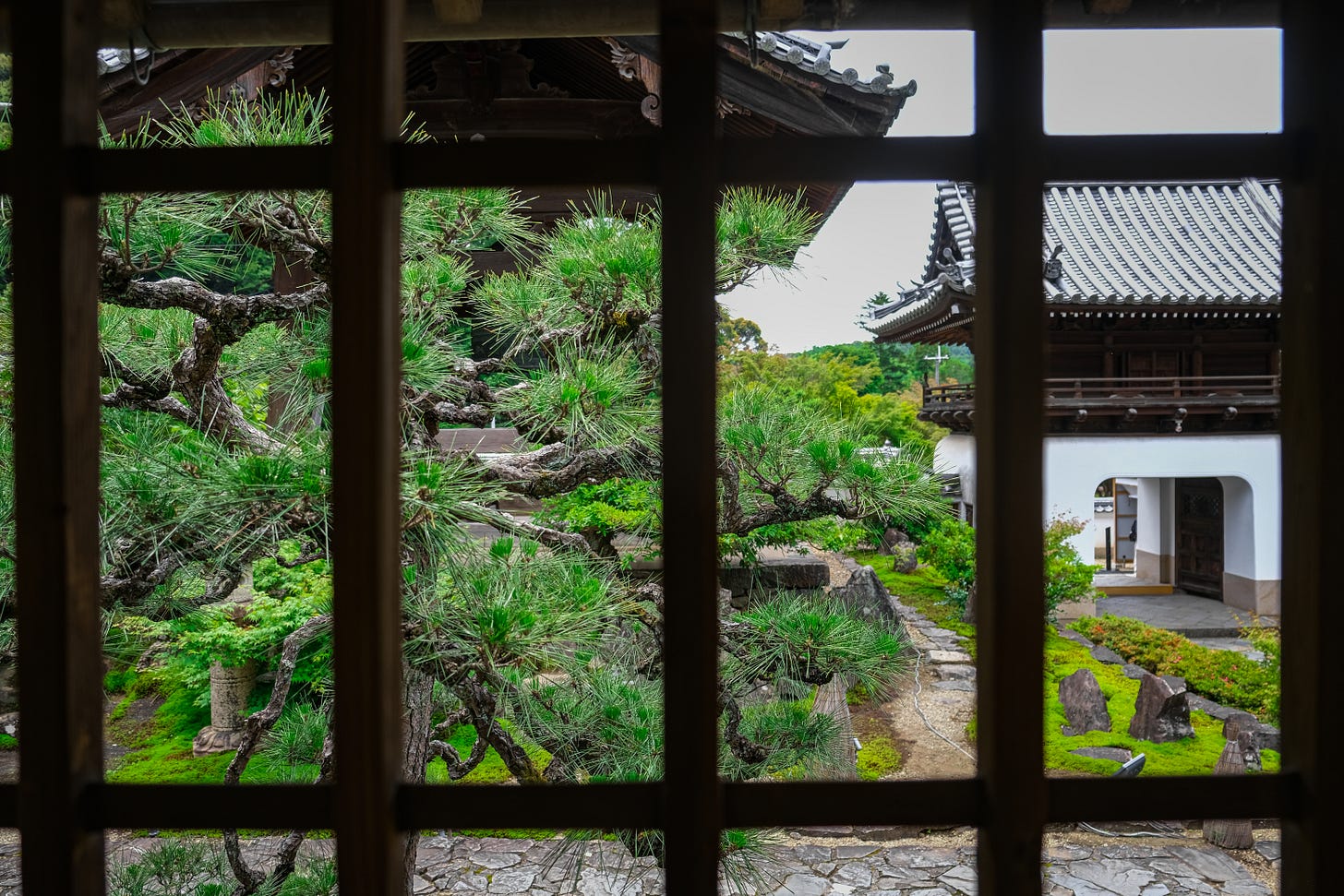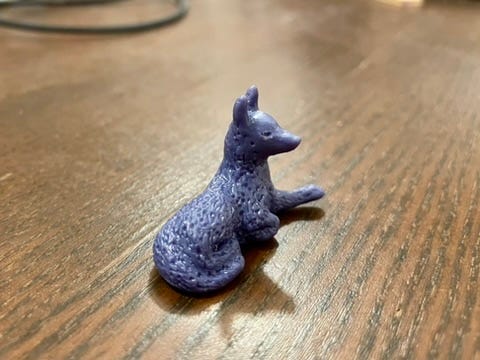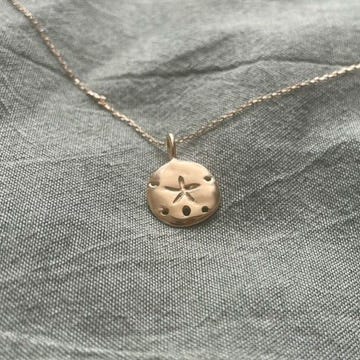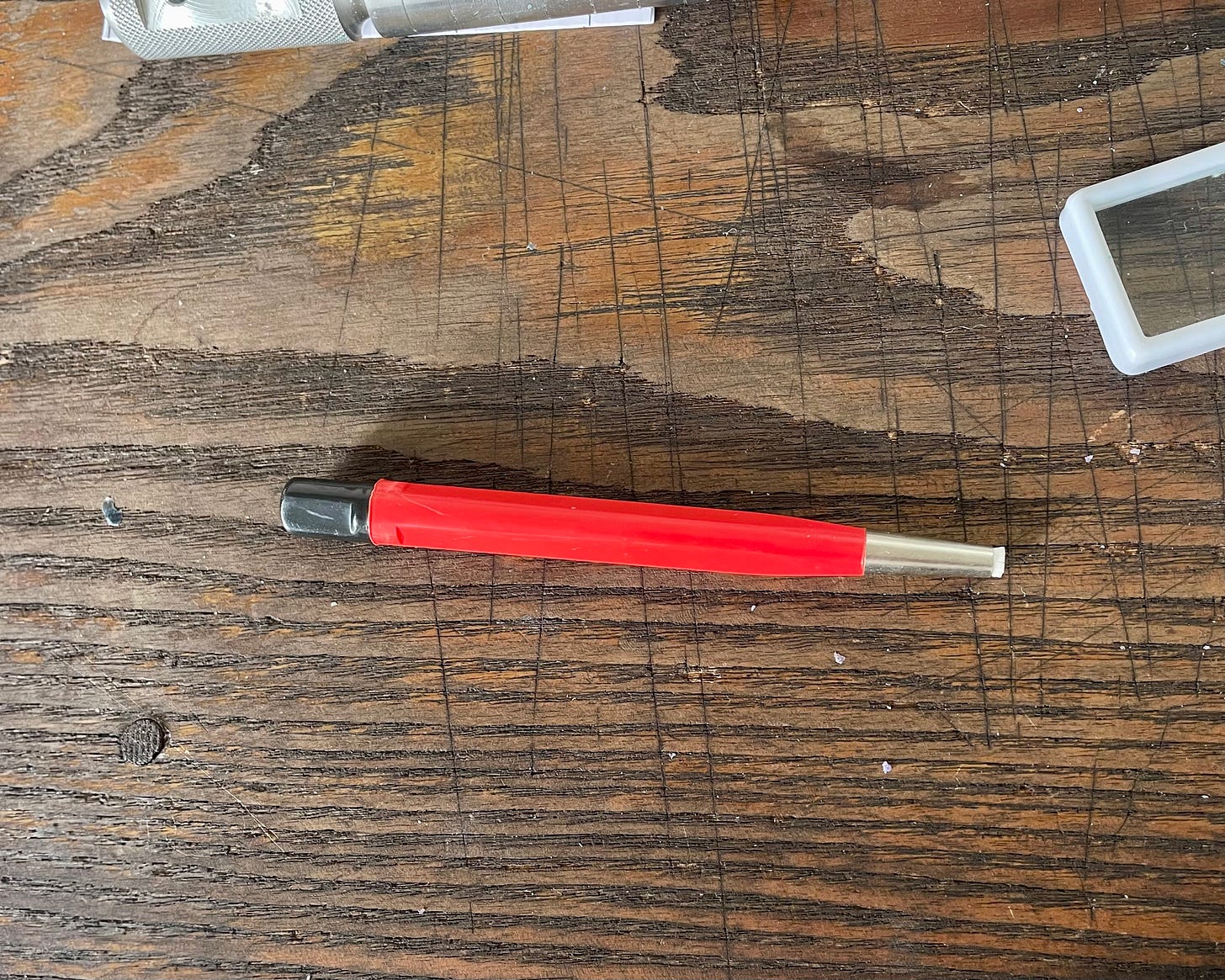I’m in a bit of a creative rut. Almost all the pieces I’ve been working on are nearly finished, but they’re out at the caster so I can’t move them forward yet. This week I started and stopped a number of uninspired ring designs trying to incorporate stones, but didn’t care to finish them.
I think part of the reason I feel stuck is that I’m in a strange limbo skillwise. I’m confident with the fundamentals (soldering, filing, polishing) and I can make simple pieces. But I’m still a long, long way from being able to create something truly intricate by hand. And it’s the intricate work that excites me most.
In past creative endeavors, I typically stop before even building foundational skills, like after a only few ceramics or kintsugi classes. This is the first time I’ve stuck with something long enough to develop a basic fluency and with that comes a new awareness: I’m skilled enough to start seeing how much I don’t know.
After a few frustrating days of making then melting designs away, I concluded that I need to take a step back in order to move forward.
A framework to move past my creative block
Lately, I’ve started thinking of my designs in two categories:
Those that sharpen my fundamentals.
Those that stretch me toward advanced skills.
Fundamental designs are simpler. They are ideal for refining technique, improving polish, and mastering clean execution.
Advanced designs are more ornate, requiring carving, complex forms, or precise stone settings. They’re harder and take more time.
Writing this out is a way of reminding myself that progress doesn’t always look like output. I will likely have fewer and fewer finished pieces over the coming year, but hopefully that means I am spending more energy on each one.
Current projects
My little figurine of my dog, Umi, is ready for casting! She took probably around 5-6 hours to make in wax. I used a soft wax, which allowed me to build up the shape, almost like drawing in 3D (as opposed to carving into a block of hard wax). As of now, my determination is that soft wax suits fluid, whimsical shapes well while hard wax suits precise or hyper-realistic pieces. Hard wax in some ways is similar to working directly in metal, but wax is easier to carve sculptural reliefs into while metal is best for sharp shaping or engraving.
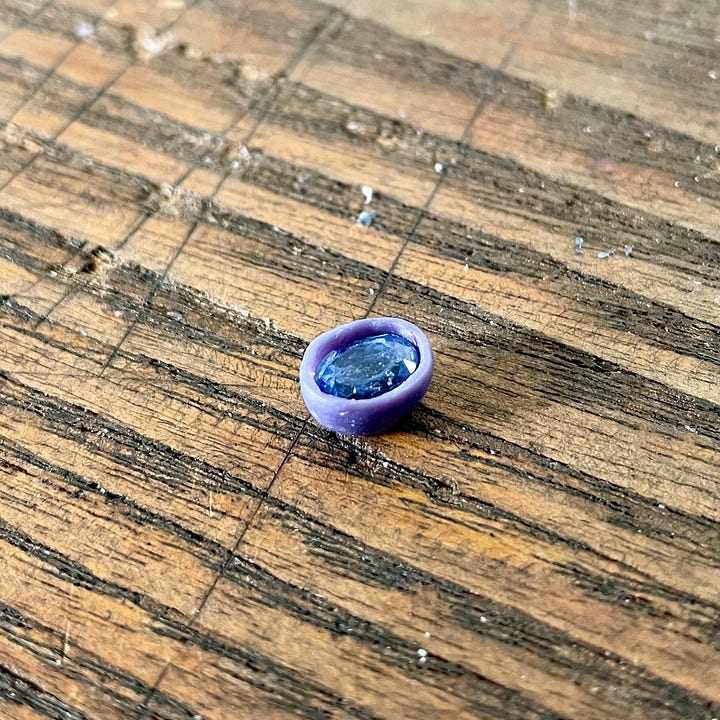

I practiced making bezel cups for a large sapphire I bought a few months ago. This sapphire is by far the most expensive stone I’ve purchased yet, so I am saving it for the right design. Continuing my comments about soft versus hard wax, I made a bezel cup using each type of wax. I honestly can’t decide which I prefer! The soft wax is easier to get into the approximate shape but harder to perfect, while the hard wax is the opposite.
I started polishing a little gold sand dollar pendant for myself. I’ll share a higher quality photo once it is complete. I may add a tiny diamond at the top of the star to finish off the design. The front of the pendant is purposely left a bit ripply and I like the way it reflects light. I am excited to wear this as a little everyday charm necklace!
Jewelry-making tip
As part of the final stages of preparing a wax piece before casting, I recommend using a microfiber brush to achieve a finely buffed finish. You can buy them inexpensively on Amazon and they really help smooth wax.



